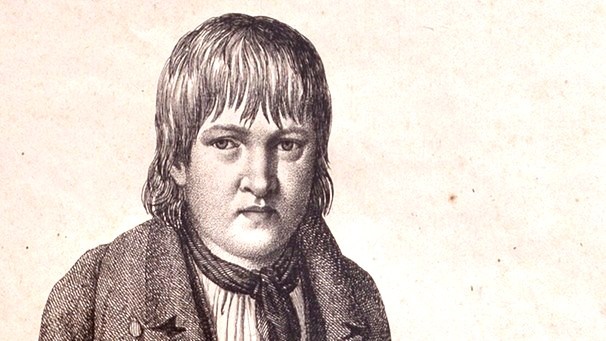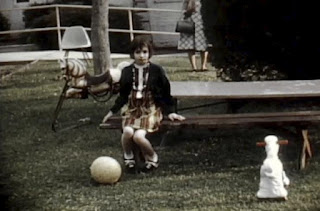The Kaspar Hauser Syndrome of 'Psychosocial Dwarfism'
On May 26, 1828, a teenage boy appeared in the streets of Nuremberg, Germany. He carried a strange letter on him addressed to a certain army captain, and seemed to be confused, next to unable to speak.
His name was Kaspar Hauser.
Nobody knew him, and nobody has claimed to know him ever since. Theories claim that he was linked to the grand ducal House of Baden, and that he had been hidden as part of a “royal intrigue.”
The occurrence
Kaspar Hauser first came to the attention of others when he appeared at the Haller Gate in Nuremberg on May 26, 1828. He carried two intriguing letters on him, and I quote:[1]
The anonymous author said that the boy was given into his custody as an infant on 7 October 1812 and that he instructed him in reading, writing and the Christian religion, but never let him "take a single step out of my house". The letter stated that the boy would now like to be a cavalryman "as his father was" and invited the captain either to take him in or to hang him.
Either he had to be taken cared of, or he had to be killed. Intriguing indeed.
He was adopted formally by the town of Nuremberg, and money was foreseen for his education and upkeep. He was given into the care of a local schoolmaster (called Friedrich Daumer), who discovered Hauser’s drawing and painting talent.
Here are some artworks by the hand of Hauser:[2]
Kaspar’s story became a sensation throughout Europe.
People were extremely interested in this strange boy and his strange story, and at first, rumors were born that he was a feral child, raised in forests, but it was Kaspar himself who told an altogether entirely different account of what had happened to him in his short life.
He claimed that for as long as he could remember, he spent his life in seclusion in a very small darkened dungeon, which was about “two meters long, one meter wide, and one and a half meter high.”
He only had a straw bed, and some simple toys, and was fed daily with rye bread and water. He did not know who fed him.
(He refused all food except bread and water, by the way.)
A number of people — such as Lord Stanhope, a British nobleman who promised to take Kaspar to England — investigated Kaspar, and tried to find out Hauser’s origins.
Nobody ever succeeded in this feat. Lord Stanhope eventually left Hauser but kept paying for his living expenses. Later he became convinced that Hauser was a fraud.
Right until the end of his life, Kaspar desperately hoped to be taken to England, but it never happened.
The prince of Baden
The plot thickened when theories started to surface about his being linked to royalty:[3]
According to contemporary rumours, probably current as early as 1829, Kaspar Hauser was the hereditary prince of Baden who was born 29 September 1812, and who, according to known history, died 16 October 1812. It was alleged that this prince was switched with a dying baby and subsequently surfaced 16 years later as Kaspar Hauser in Nuremberg. In this case, his parents would have been Charles, Grand Duke of Baden and Stéphanie de Beauharnais, cousin by marriage and adopted daughter of Napoleon. Because Charles had no surviving male progeny, his successor was his uncle Louis, who was later succeeded by his half-brother, Leopold. Leopold's mother, the Countess of Hochberg, was the alleged culprit of the boy's captivity. The Countess was supposed to have disguised herself as a ghost, the "White Lady", when kidnapping the prince. Her motive evidently would have been to secure the succession for her sons.After Hauser's death, it was claimed further that he was murdered, again because of his being the prince.
Murder
On September 14, 1833, Hauser came home with a deep stab wound in his left breast. He stated that a stranger stabbed him while handing him some bag. A small violet purse was found in Ansbach Court Garden (where he was stabbed), which contained a letter written in mirror writing, and displaying a confusing message.
He died on September 17.
Aftermath
To this very day, mystery and controversy have surrounded the remarkable story of Kaspar Hauser.
Some claim that Hauser was an impostor, and in desperate need for attention. Some even say that he stabbed himself to revive public interest in his person, and that the seriousness of the wound was an accident.
It is a fact that the letters which he carried when he first was found in Nuremberg, are written in a handwriting that closely resembled his own handwriting, once he had learned to write later on (!).
There is a syndrome which is sometimes called “Kaspar Hauser syndrome,”[4] which is “a growth disorder that is observed between the age of two and fifteen, caused by extreme emotional deprivation or stress.”
Indeed, when Kaspar surfaced the world, he was physically dwarfed, and later exhibited a physical spurt of growth.
Let us at least agree that he did not dwarf himself, and that some part of his story might well be true.
The epitaph of Kaspar’s tombstone reads:
“Here lies Kaspar Hauser, riddle of his time. His birth was unknown, his death mysterious. 1833”
References:
- Get link
- X
- Other Apps






Comments
Post a Comment